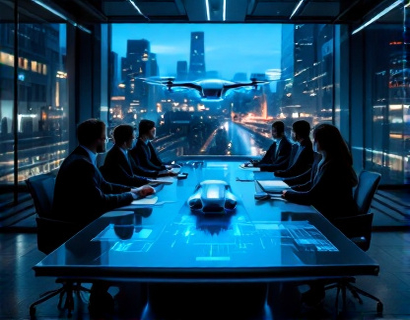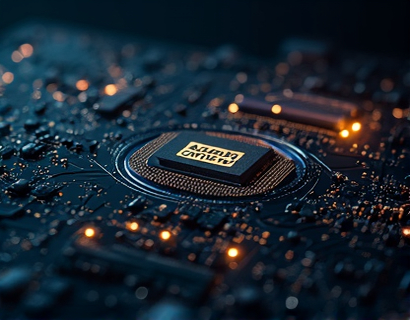Innovative Aerospace Solutions: Driving Efficiency and Safety Through Cutting-Edge Technology
The aerospace industry stands at the forefront of technological innovation, continuously pushing the boundaries of what is possible in aviation and space exploration. Recent advancements in aerospace technology have significantly enhanced efficiency and safety, transforming the way we design, build, and operate aircraft and spacecraft. This article delves into the latest innovations that are reshaping the future of aerospace engineering, offering industry leaders and visionaries a forward-looking perspective on the technologies driving this transformation.
One of the most significant areas of innovation is in materials science. The development of advanced composite materials has revolutionized aircraft design by reducing weight while maintaining or even improving strength. These materials, such as carbon fiber reinforced polymers, are not only lighter but also more resistant to fatigue and corrosion. The use of composites allows for more efficient fuel consumption, longer flight ranges, and reduced maintenance costs. For instance, the Boeing 787 Dreamliner and the Airbus A350 XWB are prime examples of how composite materials are being utilized to create more fuel-efficient and durable aircraft.
Another critical area is in aerodynamics. Advanced computational fluid dynamics (CFD) simulations enable engineers to optimize aircraft designs for minimal drag and maximum lift. These simulations allow for the testing of numerous design variations in a virtual environment, saving time and resources. The integration of CFD with artificial intelligence (AI) further enhances the design process by identifying optimal configurations that human engineers might overlook. This synergy between CFD and AI is leading to more aerodynamically efficient aircraft, reducing fuel consumption and emissions.
In the realm of propulsion, electric and hybrid-electric engines are emerging as promising alternatives to traditional jet engines. These technologies offer the potential for significant reductions in noise and emissions, aligning with the industry's sustainability goals. Companies like Rolls-Royce and Siemens are at the forefront of developing electric propulsion systems for both commercial and regional aircraft. While challenges remain in terms of energy density and range, ongoing research and development are rapidly addressing these issues, paving the way for a more sustainable future in aviation.
Safety is a paramount concern in aerospace, and technology plays a crucial role in enhancing it. Advanced avionics systems, including fly-by-wire and autonomous flight control systems, have greatly improved the safety and reliability of aircraft operations. These systems reduce the likelihood of human error, which is a significant factor in many accidents. Additionally, the integration of real-time data analytics and predictive maintenance technologies allows for proactive identification and resolution of potential issues before they become critical. This not only enhances safety but also reduces downtime and maintenance costs.
Unmanned Aerial Vehicles (UAVs) or drones are another area where technology is driving innovation. Drones are being used for a wide range of applications, from surveillance and reconnaissance to cargo transport and emergency response. The development of autonomous navigation systems, advanced sensors, and robust communication technologies has made drones safer and more reliable. For example, autonomous landing and takeoff systems, along with collision avoidance technologies, ensure that drones can operate safely in complex environments. The civil aviation authority's increasing acceptance of drone operations in controlled airspace further underscores the safety and efficiency gains brought by these technologies.
In space exploration, innovative technologies are enabling more ambitious missions and reducing costs. Reusable rocket technology, pioneered by companies like SpaceX, has dramatically lowered the cost of access to space. The ability to land and reuse rocket boosters significantly reduces the expense of each launch, making space missions more feasible. Additionally, advancements in propulsion systems, such as ion drives and nuclear thermal propulsion, promise to increase the efficiency and range of spacecraft. These technologies are crucial for deep space missions, where traditional chemical propulsion systems are less effective.
The integration of AI and machine learning in space missions is also transforming data processing and decision-making. AI algorithms can analyze vast amounts of data from sensors and instruments, providing insights that would be impossible for humans to process in real-time. This capability is particularly valuable in missions where communication delays are significant, such as those to Mars. AI-driven systems can make autonomous decisions, adjust trajectories, and even perform scientific analyses, enhancing the overall efficiency and success rate of space missions.
Satellite technology has seen remarkable advancements, with a focus on miniaturization and increased functionality. Small satellites, or CubeSats, are becoming more prevalent due to their lower cost and faster deployment times. These satellites are used for a variety of purposes, including Earth observation, communication, and scientific research. The development of constellations of small satellites is revolutionizing global internet access, providing connectivity to remote and underserved areas. Moreover, the use of advanced materials and miniaturized components in satellite design is leading to more robust and versatile space platforms.
Cybersecurity is an often-overlooked but critical aspect of aerospace technology. As systems become more connected and reliant on digital technologies, the risk of cyber threats increases. The aerospace industry is investing heavily in cybersecurity measures to protect critical infrastructure and ensure the integrity of operations. This includes the development of secure communication protocols, intrusion detection systems, and regular security audits. By prioritizing cybersecurity, the industry can safeguard against potential disruptions and maintain the safety and reliability of aerospace systems.
The future of aerospace engineering is also being shaped by international collaboration and open innovation. Global partnerships between governments, academia, and industry are fostering the exchange of knowledge and resources, accelerating the development of new technologies. Initiatives like the International Space Station (ISS) and collaborative research programs in hypersonic flight and space propulsion exemplify the power of collective effort in pushing the boundaries of what is possible. These collaborations not only enhance technological advancements but also promote peace and cooperation among nations.
In conclusion, the aerospace industry is at a pivotal moment, driven by a wave of innovative technologies that are enhancing efficiency, safety, and performance. From advanced materials and aerodynamics to electric propulsion and AI-driven systems, the future of aviation and space exploration is bright. As the industry continues to embrace these innovations, we can expect even more groundbreaking developments that will redefine the possibilities of flight and space travel.










































